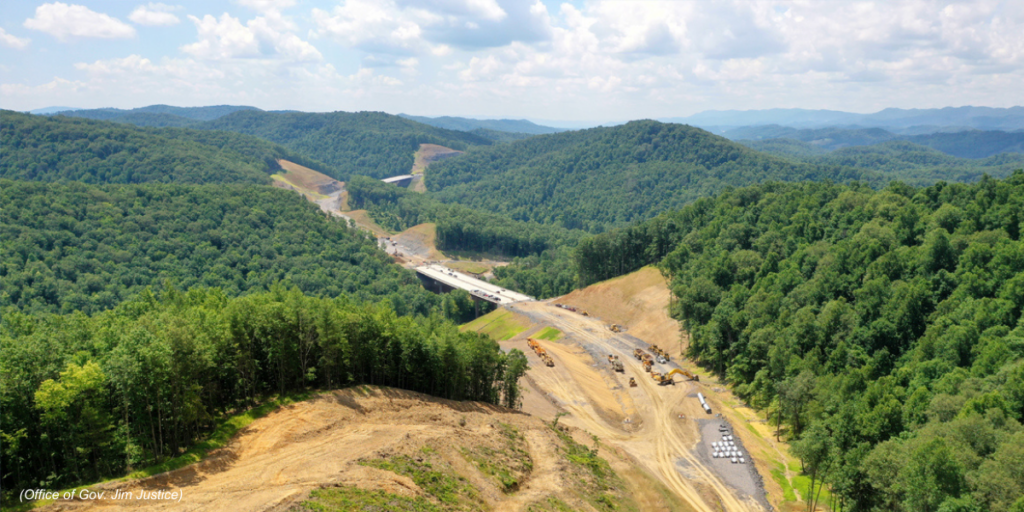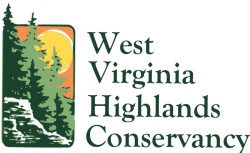
Corridor H Highway: The Billion Dollar Boondoggle
Saving pristine areas from highway construction was one of the West Virginia Highlands Conservancy’s organizing principles. As the major four-lane highway project known as Corridor H, designed to link I-79 at Weston with I-66 in Virginia, continues construction through the Monongahela and George Washington National Forests, the Highlands Conservancy continues to mobilize and engage its members to advocate for thorough environmental review and compliance, and a route that ensures the least impact on these environmentally sensitive and unique areas of the Highlands.
Parsons-to-Davis
The West Virginia Highlands Conservancy supports an alternate northern route for the Parsons-to-Davis section of the Corridor H Highway project. The West Virginia Division of Highway’s current preferred route between the towns of Parsons and Davis climbs Backbone Mountain—made of the notoriously unstable Mauch Chunk formation in the Monongahela National Forest—passes adjacent to the National Natural Landmark Big Run Bog and numerous native trout streams before making its way across the historic Blackwater Canyon towards the booming tourist destination of Blackwater Water Falls State Park and the towns of Thomas and Davis.
The northern route goes north of the towns of Thomas and Davis and preserves the unique mountain culture that people from all over come to enjoy.
Take Action
On April 16, 2024, American Rivers—a prominent national environmental advocacy organization—named the Blackwater River as one of the Most Endangered Rivers of 2024. American Rivers cited the threat of the currently State-preferred (but not yet adopted) southern route for Corridor H—that would cross all of the Blackwater’s headwater streams and potentially unearth acid mine drainage—as a major threat to the beloved river.
Take action by sending a letter to the Federal Highway Administration to mandate an alternate northern route.
Sign the citizen led Go North petition to route Corridor H north of the towns of Davis and Thomas and stay away from the Blackwater Canyon, Blackwater State Park, historic coke ovens, and rail trail. Read the long list of supporting comments here.
Lastly, please consider making a donation to support our efforts.
Public Comments
The West Virginia Division of Highways and Federal Highway Administration published a Notice of Intent to Prepare a Supplemental Environmental Impact Statement for the Parsons to Davis highway project in February 2024. We have included the comments submitted by various environmental organizations, state agencies, and others below.
- Corridor H Alternatives
- Friends of Blackwater
- Friends of Cheat
- Monongahela National Forest
- University of Virginia School of Law
- West Virginia Highlands Conservancy
The West Virginia Division of Highways opened the section from Parsons to Davis to public comments in late 2022. We have included the comments submitted by various environmental organizations below.
- Corridor H Alternatives
- Friends of Blackwater
- Friends of Cheat
- West Virginia Rivers Coalition
- West Virginia Highlands Conservancy
Corridor H in The Highlands Voice
The first article about Corridor H appeared in The Highlands Voice in June 1972. Here are our most recent stories covering the development of the decades-long project.
- R-ROPA is Just Lipstick On A Pig … Plus Corridor H’s Trail Troubles
- An Opportunity to Meet the Moment
- Corridor H: Not the Same Old Song
- No Rush for Corridor H
- Why We Asked the FHWA and WVDOH to Take A Closer Look at Corridor H
- Big Run Bog: A National Natural Landmark at Risk
- Corridor H Alternate Route is Back on the Table
- What the H is Going On?
- Two Changes Will Require Changes to Corridor H
- Plain as the nose on your face
- It’s That Serious: A Collection of Comments on Corridor H
- What the Engineers Don’t See
- The Real Northern Route for Corridor H
- Corridor H for Dummies
- An Unsettled Settlement and One Solution
- A Better Route for Corridor H
- Who you gonna believe—me, or your lyin’ eyes?
- Whose Highway?
- Become a Citizen Scientist! Help Conduct Water Quality Monitoring Related to Corridor H Construction
- Corridor H’s Construction Company Facing Fines
- A Better Direction for Corridor H
- Cease and Desist!
- Must a Bad Project Be Badly Done?
- Putting the Brakes on Corridor H: A Brief History
